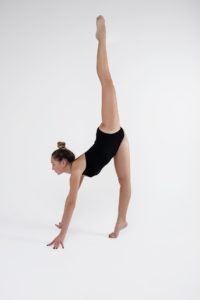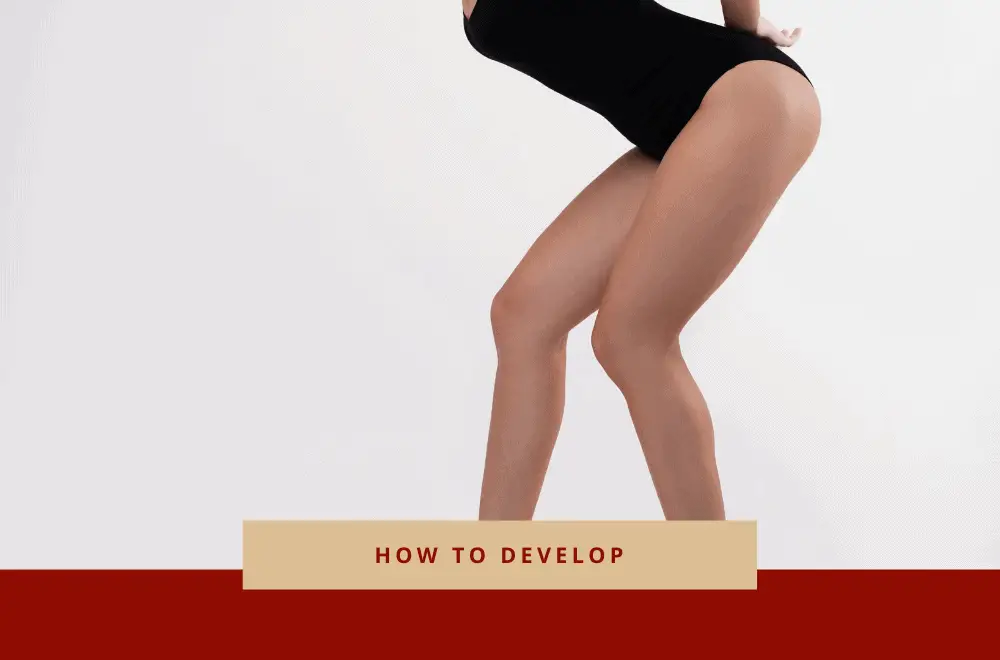As I watch a gymnastics meet, I notice that some routines really seem to pull me in. I even get chills watching them, if they’re really good! Some gymnasts seem to have a special quality about them that draws people to watch them.
What is it about these routines that makes them irresistible to watch?
Artistry!
Artistry in gymnastics is the quality of the gymnast’s movement and expressiveness during her routine. All gymnasts are expected to demonstrate artistry during both their beam and floor routines. Gymnasts who have very artistic routines stand out for their performance quality, particularly during the dance sections of their routines.
There are three categories for artistry in a gymnastics routine. Each category can incur deductions of up to 0.10 if not performed optimally. Let’s take a look at each of these categories separately.
Originality/Creativity
The first category of artistry is to evaluate the originality of the routine. The exact wording from the Code of Points states, “Originality/Creativity of Choreography in Elements and Connections”. In this category, the judges look for something different, unusual, or cool in the routine. It could be a skill performed with a different flair, an unusual pose or piece of choreography, or a dance sequence designed for the gymnast.
When I see something that makes me say, “wow!”, I write a little star on my paper to make a note of it. I love to see little unique pieces of choreography that are specific to the gymnast. It doesn’t have to be a big thing! If you’ve got a flexible gymnast, use a pose to show off that flexibility. If you know a gymnast who loves to dance, use one of her favorite moves. On floor, a fun and different acro skill can be used to fulfill this category, like an aerial walkover, side somi, or full twisting back handspring.
One of the more memorable routines I judged was a baseball-themed floor routine. The gymnast pantomimed throwing out a pitch, batting, and backpedaling to catch a fly ball. It was a routine I would never have choreographed myself, but it suited this gymnast. She threw herself into the choreography and made me feel like I was at a baseball game. That’s what artistry is all about – pulling the audience in!

Personal Style
The second category of artistry in gymnastics is the gymnast’s display of her own personal style. The exact wording of this category is “Quality of Movement to Reflect Personal Style”. Notice that the word “personal” is emphasized in this category. This means that no two routines will look the same. Every gymnast will have a different style of dancing and movement. This is what makes watching floor and beam so much fun!
The example above of the baseball routine is a good example of a unique personal style. The routine doesn’t have to be that different from the norm to fit into this category, though. The gymnast might have a very energetic style, with upbeat music and fast-paced movement. Or she may have a more lyrical style, with flowing movements and a slower pace. I’ve seen country-style routines, balletic routines, routines with sharp movements performed to rock music, and even a routine where the gymnast pretended to be a monster. The options are endless!
Watch this routine from Svetlana Boginskaya for an example of a distinct personal style. I was very young when I first watched this routine, and I remember thinking that it was SO WEIRD. Now, I love it, and it’s one of those timeless routines that is memorable even after so many years.
Quality of Expression
The final component of artistry is “Quality of Expression”. This category evaluates the gymnast’s ability to show off her routine to the judges and audience. Examples from the Code of Points are projection and focus. Projection is “selling” the routine to the audience. How well does the gymnast perform her choreography? Does she put her whole body into it? Does she take every movement to the fullest? The routines that earn top marks in this category are ones that really show off the routine, even during simple parts like moving to the corner for a tumbling pass.
The word focus describes a gymnast’s facial expressions and eye contact. The most artistic gymnasts don’t look at the floor throughout their routine. They lift their head up, vary their eye contact, and use their head as an extension of their body. We’ve all seen the routines in which the gymnast is looking at the floor and doesn’t use her head in the choreography. It isn’t necessary to make eye contact constantly, but a little bit of eye contact can go a long way.
One of the greatest examples of expression and artistry in recent gymnastics history is Laurie Hernandez. Her floor routine was so expressive that it earned her the nickname “The Human Emoji”. Here’s a video of this incredible routine, choreographed right down to the facial expression in each moment.
Artistry in Gymnastics: Tips from the Judge
NOTE: If the routine is a compulsory Level 1-5 routine, there is no deduction for originality, and the other two categories are worth up to 0.15 each.
Now that you know all of the details about artistry in gymnastics, what are some ways to put it into practice?
First, make sure the music selection works well with the gymnast’s personality and style. If the music isn’t a good fit, it will be that much harder for the gymnast to perform the routine with great artistry.
Next, use a choreographer who is skilled in developing a routine that fits the gymnast’s style. Make sure there is at least one original move or choreography section, something to make the judges say “wow”! Each portion of the routine should match the music.
Finally, practice expression just as if it were a gymnastics skill. Have teammates stand around the edge of the floor, and make a challenge to make eye contact with each teammate at least once. Practice each section of the routine, to be certain the gymnast knows exactly where each hand, foot, and head position should be. Then practice some more, making sure to sell that routine as the gymnast gains confidence. Some gym clubs will have gymnasts take dance lessons as part of their gymnastics training, to encourage the artistic expression piece.
Want to read more about other general deductions in gymnastics? Here’s an article about compulsory general deductions:
General Deductions for Exemplary Compulsories
And here’s an article about the most recent J.O. Updates:
Resources: USA Gymnastics J.O. Code of Points, 2018-2022.
